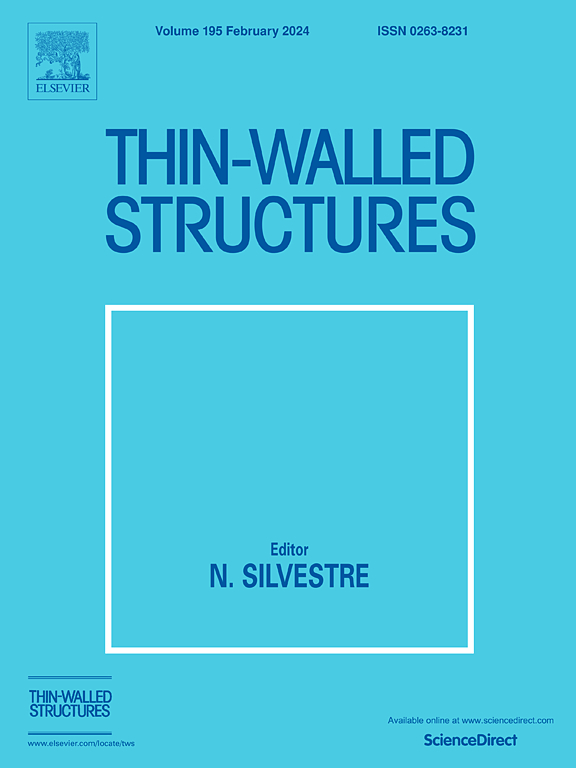Mechanics of finite nonlinear viscoelastic growth for soft biological tissues
IF 5.7
1区 工程技术
Q1 ENGINEERING, CIVIL
引用次数: 0
Abstract
Many soft biological tissues have a kind of rubbery properties and behave viscoelastic. The main difference between soft biological tissues and rubber-like materials is that they can grow. Studying the growth of these structures is challenging due to their properties. The aim of this study is to develop a computer program and a framework for the finite nonlinear viscoelastic growth of soft body parts such as arteries, skin, intestines and aneurysms, considering a Newtonian fluid for the viscoelastic branches. To deal with nonlinear relationships, a membrane FE formulation is used throughout the total Lagrangian framework. The general formulas work for different types of materials, both isotropic and anisotropic. To solve the equations for how the internal variables for growth and the viscoelastic branches change over time, two implicit Euler-backward methods are used. To see whether the model works correctly, we compare the numerical results with experimental data on skin and artery growth. The numerical results show that the described framework can accurately predict the experimental findings. In addition, the model allows us to study different shapes of biostructures such as intestinal growth and aneurysm growth. This study may serve as a benchmark for a better understanding of the complex phenomena in the biomechanics of growth.
求助全文
约1分钟内获得全文
求助全文
来源期刊

Thin-Walled Structures
工程技术-工程:土木
CiteScore
9.60
自引率
20.30%
发文量
801
审稿时长
66 days
期刊介绍:
Thin-walled structures comprises an important and growing proportion of engineering construction with areas of application becoming increasingly diverse, ranging from aircraft, bridges, ships and oil rigs to storage vessels, industrial buildings and warehouses.
Many factors, including cost and weight economy, new materials and processes and the growth of powerful methods of analysis have contributed to this growth, and led to the need for a journal which concentrates specifically on structures in which problems arise due to the thinness of the walls. This field includes cold– formed sections, plate and shell structures, reinforced plastics structures and aluminium structures, and is of importance in many branches of engineering.
The primary criterion for consideration of papers in Thin–Walled Structures is that they must be concerned with thin–walled structures or the basic problems inherent in thin–walled structures. Provided this criterion is satisfied no restriction is placed on the type of construction, material or field of application. Papers on theory, experiment, design, etc., are published and it is expected that many papers will contain aspects of all three.
 求助内容:
求助内容: 应助结果提醒方式:
应助结果提醒方式:


